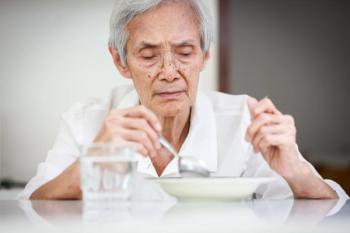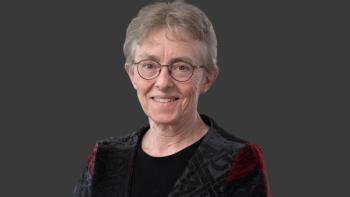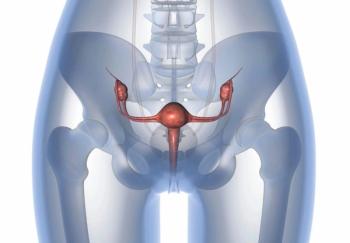
Oncology NEWS International
- Oncology NEWS International Vol 11 No 1
- Volume 11
- Issue 1
The Future of Bioethics: A Talk With Dr. Linda Emanuel
In this article (the first of a two-part interview), Linda L. Emanuel, MD, PhD, discusses bioethics. Part I highlights end-of-life care and physician-assisted suicide, while part II, which will appear in an upcoming issue of ONI, focuses on organizational ethics and future issues in bioethics.
In this article (the first of a two-part interview), Linda L. Emanuel, MD, PhD, discusses bioethics. Part I highlights end-of-life care and physician-assisted suicide, while part II, which will appear in an upcoming issue of ONI, focuses on organizational ethics and future issues in bioethics.
Dr. Emanuel is Buehler Professor of Aging and director of the Buehler Center on Aging, Northwestern University Medical School. She was formerly vice president for ethics standards at the American Medical Association (AMA).
Dr. Emanuel has written and lectured widely on bioethics, including editing the book Regulating How We Die: The Ethical, Medical, and Legal Issues Surrounding Physician-Assisted Suicide (Harvard University Press, 1998).
Oncology News International: How did you first become interested in bioethics?
Dr. Emanuel: For me, the precipitating events were around end-of-life care. I was right out of medical school, in training. The specific case that triggered my interest was a 64-year-old woman with pneumonia who came into the emergency ward in respiratory arrest. We resuscitated her successfully only to find that she was left in a vegetative state.
ONI: Advance directives are an important part of end-of-life care. How can they be implemented on a practical level?
Dr. Emanuel: Advance directives have been implemented in a spotty kind of way. Something upward of 25% of patients have advance directives of some kind, whether it is a short conversation with a member of the family or a formal written and filed document. That figure is from 5 or 6 years ago, but it is probably still a relatively small number. A benchmark is that 50% of patients have estate planning on record, so I think we have a way to go.
It is important to think about advanced care planning not as a document but as a longitudinal discussion with the health care providers, and that is something that is harder to evaluate.
We need to change the taboo in the culture about discussing end of life. If there were no taboo, we could invite people to think about how health care fits in with their values. They would be asked about their goals for care in different types of illness situations. This type of conversation would be an expected, normal part of everything else that we discuss in health care. Then, there might be worksheets that could be an important adjunct to that process and could be used as documents when appropriate.
We need to de-emphasize the documentation and the legal side of all of this and re-emphasize the discursive and interactive side, so that people are thinking ahead about their health care and about their end-of-life care, even when they’re completely healthy.
Healthy people are often the ones who have accident-related illnesses that cause the most difficult dilemmas in end-of-life care decision-making. It’s healthy people who should have advance care planning, whereas, in fact, it is mostly people who are ill and elderly whom we target for advance care planning. They, too, should have advance care planning discussions, but we all should. It should be as much a part of life as having third-party insurance for driving.
Making this discussion routine would be helpful. Making it less formal, but more common, would also be helpful. I think we are well on our way to understanding how to do that.
Our documents are more oriented toward worksheets now, and we are beginning to train our professional colleagues in ways that are more helpful. We still have a long way to go, but we are moving forward.
ONI: How do you feel that physicians can better prepare patients for death? And how can we better prepare physicians to deal with end-of-life care issues?
Dr. Emanuel: I think the number one barrier to dealing with these types of issues is our own relationship to death. We are all in as much denial about our own mortality as we would like our patients not to be. We need to be really comfortable talking about and planning for our own dying.
So, the number one challenge for professionals is to do some of our own existential work and maturing. That we don’t think we are going to die is, after all, an attitude of adolescence. It is a nationwide, culture-wide problem. And it’s not something to be totally ashamed of. We’re wired to live, not to die, and that’s a good thing. It’s just a question of being more balanced. So that’s one task.
Task two is that we need to have some training in how to broach these subjects while they are still taboo subjects. This may well still be difficult even in the future when, hopefully, there is less of a taboo. We need to learn some basic skills on how to raise this sensitive topic.
Those skills are available in the literature and in physician education and other professional schools that are educating our nurses and social workers. Professionals are learning basic skills for talking about end of life, such as sitting down when you’re talking to people, having tissues available, allowing silence when it is fitting, and using language that’s not offensive or confrontational.
These are things we are teaching in our program Education for Physicians on End-of-Life Care (EPEC) (see
EPEC is a program I started while I was at the AMA. That program benefited from being at the AMA, but now benefits by being based at an academic medical center. It’s a program that disseminates itself throughout the country. It started with national conferences and then regional conferences to present the program to a select group of 500 physician-educators for implementation in their own institutions or communities. It’s really tailor-made for colleague-to-colleague learning.
ONI: The Dutch medical community has experience with the physician-assisted suicide aspect of end-of-life care. Do you think that we will be able to learn from their experience, or have we already learned from them?
Dr. Emanuel: We have some good data from the Dutch that have been helpful, but every country is different, and I don’t know if we will be able to do anything on this issue that isn’t authentically American.
Both sides of the physician-assisted suicide debate have used the Dutch data. It has been interesting to see how the same numbers are used for diametrically opposed arguments. For instance, we’ve been saying for quite a long time in the ethics and philosophy literature that intent is important in deciding whether an outcome is ethical or unethical.
The fact that a patient may have died because of the effects of medication may be less morally relevant than the question of intent. Was that medication taken or given with the intent that the patient die, or was it taken or given with the intent of curing their cancer or easing their cancer-related pain? Was it a side effect of the chemotherapy or was it an intentional overdose of barbiturates or opioids?
The data coming out of The Netherlands have yielded evidence on the intent of physicians in administering medications, since the Dutch are able to survey their physicians and get answers without too much bias based on fear.
So, we’ve been able to get good data showing that physicians who intend to hasten death use a different set of medications than do physicians who intend to produce comfort until death arrives for reasons relating to the underlying illness. Physicians who intend death are likely to use muscle-blocking agents and potassium, whereas physicians who do not intend death do not use these medications.
That’s just a very interesting way in which empirical data that could not be gathered in this country has been gathered in The Netherlands. It’s informative to both sides of the debate and confirms some of the analytical reasoning that moral philosophy has offered us.
ONI: How do your own personal beliefs affect your approaches as a bioethicist, or do they?
Dr. Emanuel: I’m sure they do. No one stands outside his or her own framework. Perhaps we all try to; perhaps we all would like to; but to some extent, we all would like to advance our own agenda. For instance, a book I edited on physician-assisted suicide was certainly an attempt to give a fair airing to both sides of the debate. Opponents of physician-assisted suicide were a little askance at how much space I gave to the proponents, and the proponents were convinced that I was an opponent and should have declared my colors more thoroughly. Different people had different views about my objectivity.
ONI: How do you approach clinical situations from a bioethical standpoint in light of patients’ diverse cultural viewpoints?
Dr. Emanuel: I remember the days when we couldn’t get beyond the five different socioeconomic categories in the census report. And now we’re beginning to realize that culture is individual specific. So I have a culture within this team I work with, and I have a culture within my family, and so on. Just getting diversity into the definitions of culture has been critical. I think we’re moving ahead. But again, we have a long way to go!
We think ethics is a balancing of values on the points at which they tend to conflict. Another way of thinking about ethics is as a tool to be applied when people’s explanatory frameworks (ie, their cultures) conflict. Many of the interesting ethics questions emerge from the cultural discourse. If you define culture as an explanatory framework of life, then when cultures conflict, that’s when the ethics issues arise and that’s when we get interested.
ONI: Do you think cost-effectiveness considerations are having or will have an effect on end-of-life care issues?
Dr. Emanuel: They have had an effect. We got a lot of mileage out of the notion that end-of-life care was needlessly expensive because we were using a lot of expensive technology that people didn’t want. Then people were motivated by the notion that they "could do well by doing good." In other words, they could do the right thing and save money.
I think the reality is that quality end-of-life care is very resource intensive in terms of human time, and human time is always very expensive. Even if you get rid of all of the unnecessary technology, you can never eliminate all of the human interaction time that is necessary. Plus, quality end-of-life care is going to end up using technology as well.
So, it’s kind of an openly discussed secret that quality end-of-life care is probably not much cheaper than any other kind of care, or probably not cheaper than the low-quality, overly invasive care that motivated us in the beginning.
Will cost-effectiveness continue to motivate us? Sure. In fact, spending escalates exponentially at the end of life. The fact that we spend a lot of moneytaxpayers’ money, our own personal money, insurance money, institutional moneyfor end-of-life care is going to make people look at this carefully.
Ms. Ali, Ms. Witlen, and Ms. Tomori are project managers, NorthwesternUniversity Medical School. Dr. Bennett is professor of medicine, NorthwesternUniversity Medical School, Robert H. Lurie Comprehensive Cancer Center, anddirector of HSR&D, VA Chicago Health Care SystemLakeside Division.
Articles in this issue
almost 24 years ago
ODAC Sends Mixed Message on New Gliadel Wafer Indicationalmost 24 years ago
ONCC Certification Test Results Are Announcedalmost 24 years ago
Rituximab Ups Survival in Aggressive and Indolent NHLalmost 24 years ago
Topotecan Used in Aggressive Front-Line Therapy for SCLCalmost 24 years ago
Depsipeptide Shows Activity in T-Cell Lymphomaalmost 24 years ago
FDG-PET Useful in Newly Diagnosed and Recurrent NSCLCalmost 24 years ago
Adjuvant Anastrozole Superior to Tamoxifen in Huge ATAC Breast Cancer Trialalmost 24 years ago
ODAC Backs Adding HER-2 DNA Test to Herceptin Package Insertalmost 24 years ago
FDA and VA Plan Joint AIDS Studyalmost 24 years ago
Breast Conservation Increases With On-Site Radiation UnitNewsletter
Stay up to date on recent advances in the multidisciplinary approach to cancer.



















































































